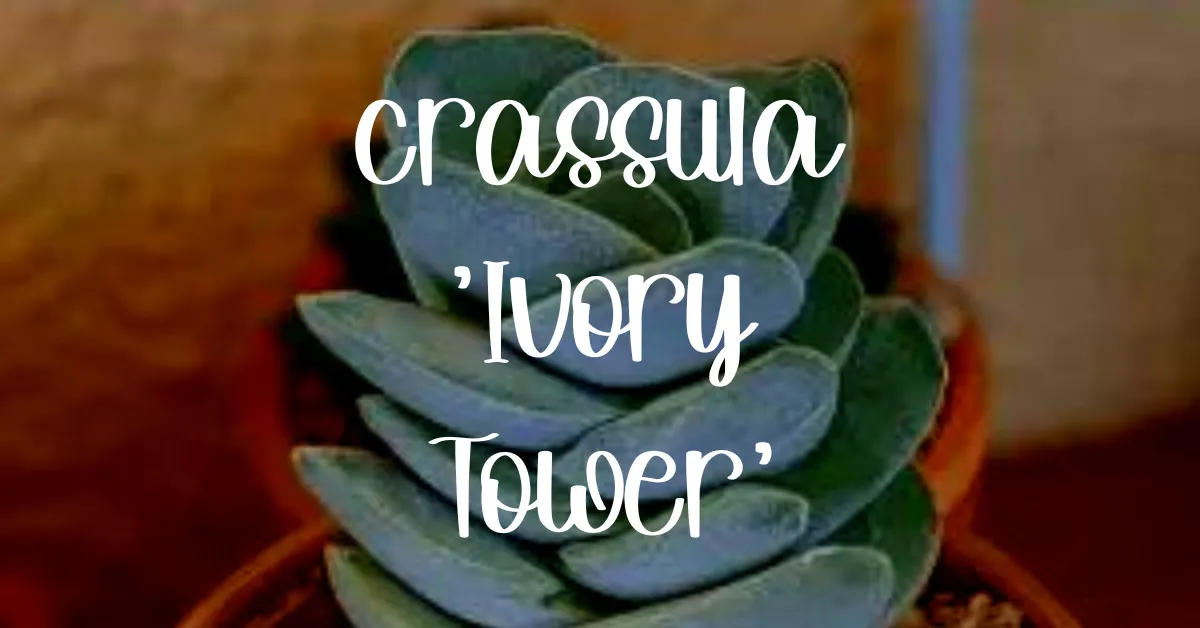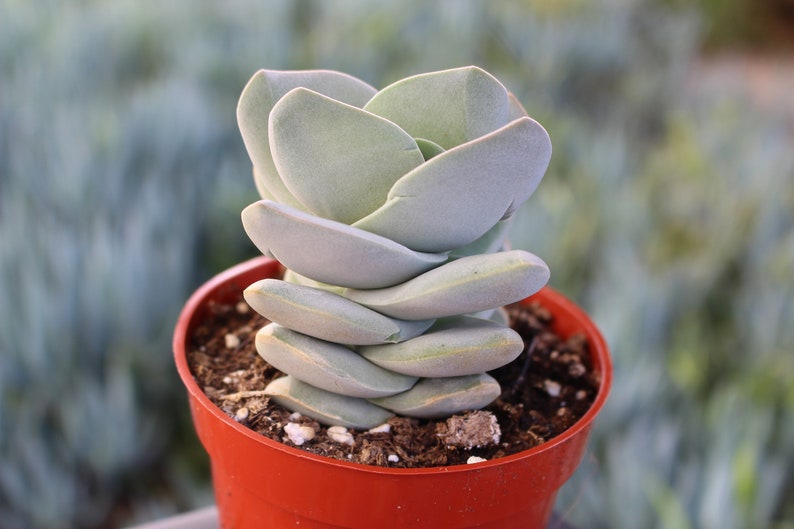Crassula ‘Ivory Tower’ is a unique and low-maintenance succulent plant that is perfect for adding interest and texture to indoor or outdoor gardens. With its stacked leaf arrangement and compact growth habit, Crassula ‘Ivory Tower’ is an ideal choice for succulent gardens, rock gardens, or as a stand-alone specimen plant. In this blog post, we will discuss the appearance, characteristics, care and cultivation of Crassula ‘Ivory Tower’ and how to incorporate it into your indoor or outdoor garden.

Appearance and Characteristics of Crassula ‘Ivory Tower’
Crassula ‘Ivory Tower’ is a succulent plant native to South Africa, known for its unique, stacked leaf arrangement and compact growth habit. The leaves of Crassula ‘Ivory Tower’ are thick, triangular and glossy green in color, stacked closely together along the stem, creating a spiral pattern. The stem of the plant can grow up to 20cm (8 inches) tall, and the leaves can grow up to 3cm (1 inch) long. This plant does not produce flowers, it’s grown mainly for its foliage. It can grow to be around 15-20 cm (6-8 inches) tall and 20-25 cm (8-10 inches) wide when fully mature.

Care and Cultivation of Crassula ‘Ivory Tower’
Light and Temperature
Crassula ‘Ivory Tower’ prefers bright, indirect light, but can tolerate some shade. It can be grown indoors or outdoors, and can tolerate a wide range of temperatures, from 40 to 90 degrees Fahrenheit.
Watering and Fertilizing
Crassula ‘Ivory Tower’ is drought-tolerant and should be watered sparingly, allowing the soil to dry out completely before watering again. In winter, it’s best to water even less to prevent rotting. Fertilizing is not necessary, but if you choose to do so, use a balanced, water-soluble fertilizer during the growing season.

Succulent fertilizer available to purchase on Etsy.
Pests and Diseases
Crassula ‘Ivory Tower’ is not susceptible to many pests or diseases, but mealybugs and spider mites can be a problem. Regularly inspecting the plant and removing any pests by hand is the best way to prevent infestations.
Incorporating Crassula ‘Ivory Tower’ into Your Garden
Crassula ‘Ivory Tower’ is a versatile plant that can be incorporated into a variety of garden styles. Its stacked leaf arrangement and compact growth habit make it an ideal choice for succulent gardens, rock gardens, or as a stand-alone specimen plant. It can also be grown in a container, making it a great choice for indoor gardening.
In conclusion, Crassula ‘Ivory Tower’ is a unique and low-maintenance succulent plant that is perfect for adding interest and texture to indoor or outdoor gardens. With proper care and cultivation, Crassula ‘Ivory Tower’ can thrive for many years, making it a great addition to any collection of succulent plants. If you’re looking for a new addition to your garden, consider Crassula ‘Ivory Tower’ for its unique appearance and easy care requirements.
Growing Season:
Winter
Dormant Season:
Summer
Hardy to USDA Zone: 10a- Size: Up to 6″ tall
- Foliage: Green, velvety texture
- Flower: Pink
Propagation: Stem cuttings, seed
Light: Dappled sun, bright shade
Water: Drench & Dry
Soil: Gritty, mostly inorganic, quickly draining- Origin: South Africa

About Crassula ‘Ivory Tower’
Crassula ‘Ivory Tower’ is a really interesting hybrid succulent between C. ‘Moonglow’ and C. perfoliata var. minor (Propeller Plant) by Myron Kimnach.
Crassula ‘Ivory Tower’ has thick, stacked leaves with an unmistakeable notch at the base of the velvety green leaves.
To propagate Crassula ‘Ivory Tower’ stem cuttings will work the easiest. Snip the stem between sets of leaves, let it callus for a few days and place in dry succulent soil. Since the leaves are stacked so closely together, I recommend using a piece of dental floss or fishing line to make your cut.


